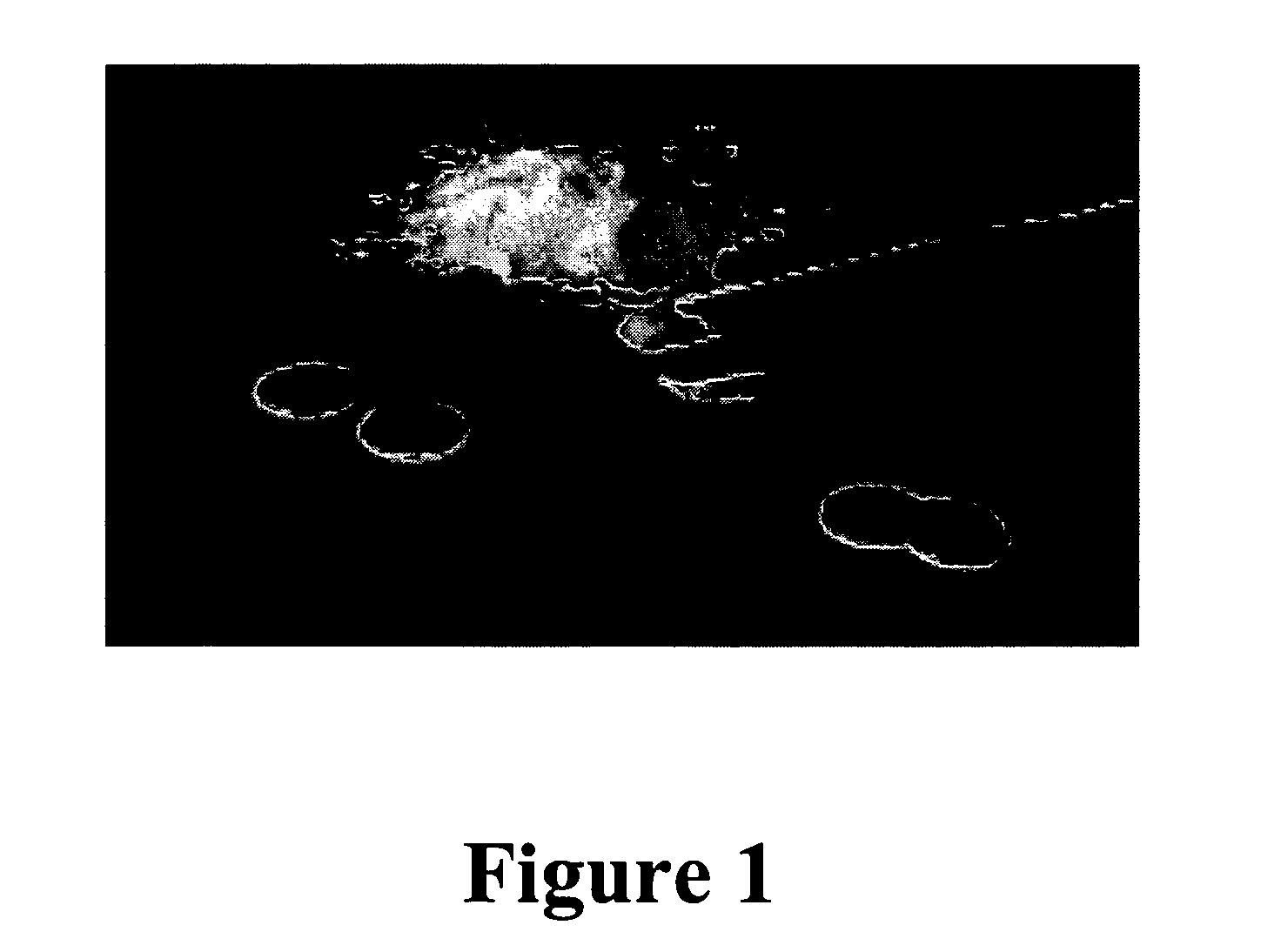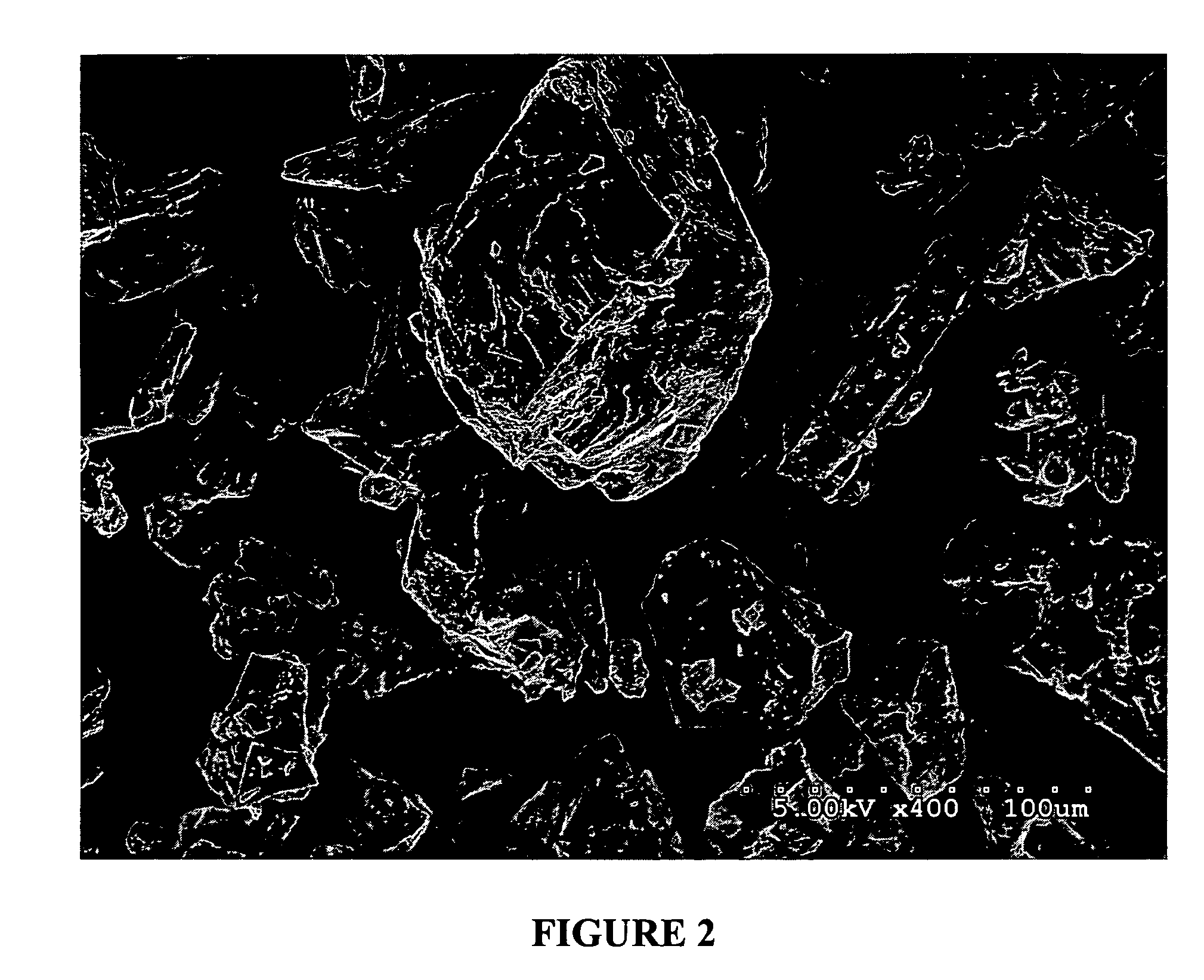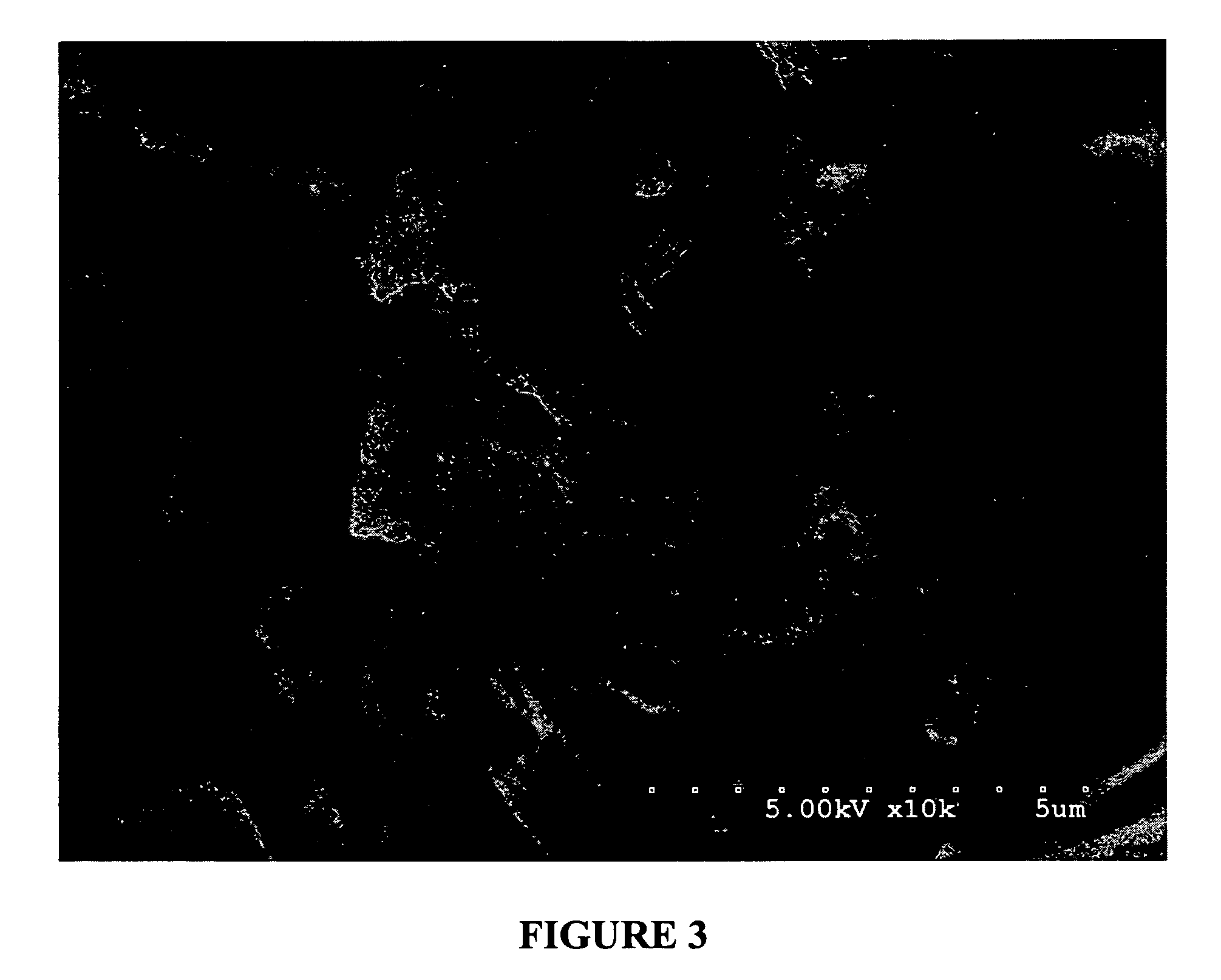Mucoadhesive drug delivery devices and methods of making and using thereof
a technology of adhesives and drug delivery devices, which is applied in the direction of powder delivery, peptide/protein ingredients, macromolecular non-active ingredients, etc., to achieve the effect of reducing pain caused by wounds and/or lesions and enhancing drug absorption
- Summary
- Abstract
- Description
- Claims
- Application Information
AI Technical Summary
Benefits of technology
Problems solved by technology
Method used
Image
Examples
example i
Mucoadhesive Composition
[0178]Powdered egg albumin (Alfachem) (50 gs) is added to a stirred (magnetic stirrer) solution of glycerol (15 gs) in saline (0.9%) (187.5 mls) in a 500 ml beaker. After all the albumin has been added, and mostly dispersed, the solution is shaken at the slow settting for 30 minutes on a platform shaker (Eberbach). (note: an active drug may be added to the glycerol / saline solution before the albumin is added). The resulting solution / dispersion was divided into two-250 ml beakers up to the 125 ml mark (approximately one-half full). The two beakers were covered with foil and placed in a freezer at −20° C. overnight. The frozen solutions were next placed onto a freeze-drier platform previously held at −30° C. and left to equilibrate for one hour. Cooling of the platform was then discontinued when a vacuum of 200 millitor was obtained. The condenser was then turned off. Full vacuum was then continued for 48 hours or until the platform temperature reached ambient ...
example ii
In Vitro Bioadhesion Tests on Mucosal Tissue
[0179]Mucoadhesive devices including ovalbumin, glycerol and water (no drug) were made into particles utilizing the methods described above. 150 mg of the particles were compressed into 1 cm diameter wafers at 1375 psi for 3 min (MAD1, MAD 2 and MAD3). The wafers were then tested for mucoadhesive attachment by adhering them to the bottom of a glass beaker with double sided Scotch®, 3M tape and pressing the bottom of the beaker to fresh wetted mucosal membrane from pig intestine that was cleaned for usage in sausage casing. The bottom of the beaker was pressed to the mucosal membrane for 30 seconds at approximately 10 psi. The beaker was then placed on a Satorius electronic balance and the membrane pulled slowly in an upward motion at a 45° angle away from the wafer and beaker until completely detached. The measurement taken was the detachment force, which is the difference between the starting weight of the beaker, wafer and membrane and t...
example iii
In Vitro Bioadhesion Tests on Mucosal Tissue
[0181]Mucoadhesive devices including ovalbumin, glycerol and water were made into wafers and were tested for mucoadhesive attachment to fresh mucosal membrane from pig intestine by Christer Nyström, Ph.D., of the University of Uppsala, Uppsala, Sweden. A TA-HDi texture analyser (Stable Micro Systems, Haslemere, UK) with a 5 kg load cell was used. The pig intestine was cut into approximately 2 cm2 pieces and placed in a tissue holder. The mucoadhesive devices were attached to the upper probe using double-sided tape (Scotch, 3M). After spreading 3 ml of buffer [Krebs-Ringer Bicarbonate] with a pipette onto mucosa, the studied material was brought into contact with mucosa under a force of 0.5 N over 30 seconds. The probe was then raised at a constant speed of 0.1 mm / s and the detachment force was recorded as a function of displacement. The detachment force was measured at a sampling rate of 25 measurements / second throughout the measuring cycl...
PUM
| Property | Measurement | Unit |
|---|---|---|
| thickness | aaaaa | aaaaa |
| thickness | aaaaa | aaaaa |
| thickness | aaaaa | aaaaa |
Abstract
Description
Claims
Application Information
 Login to View More
Login to View More - R&D
- Intellectual Property
- Life Sciences
- Materials
- Tech Scout
- Unparalleled Data Quality
- Higher Quality Content
- 60% Fewer Hallucinations
Browse by: Latest US Patents, China's latest patents, Technical Efficacy Thesaurus, Application Domain, Technology Topic, Popular Technical Reports.
© 2025 PatSnap. All rights reserved.Legal|Privacy policy|Modern Slavery Act Transparency Statement|Sitemap|About US| Contact US: help@patsnap.com



